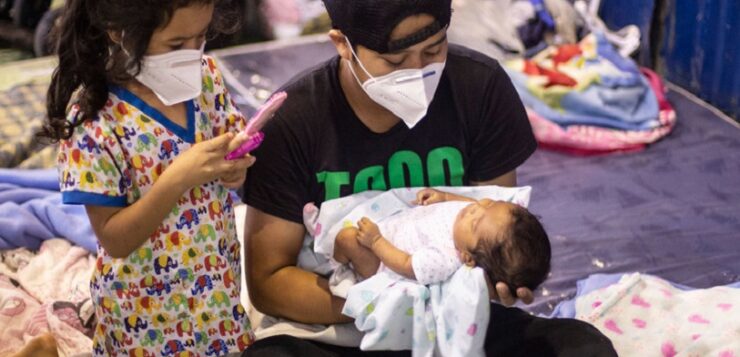There have never been so many tropical storms as this year. With “Iota” the next one is already at the gates of Central America. The region has already reached its limits due to the corona pandemic.
By Anne Herrberg, ARD Studio Mexico
The water is still just below the roofs of the houses, and isolated electricity pylons protrude from the mud-brown floods – the municipality of Pimienta looks like a ghost town on the TV pictures. Here, in the northwest of Honduras, the hurricane “Eta” raged brutally, massive rains caused the rivers to overflow their banks, they tore down bridges, roads, entire villages, destroyed fields and plantations, hundreds of thousands lost everything within hours.
“At first I thought there was still hope because people said the roof of your house can still be seen there, but the next morning they said your house no longer exists. That tore my heart apart. What should I do now Do? I’m on the street, “said this young man from the Playón settlement of the news channel CNN.
Millions are homeless and more than 200 people have died
Thousands have been camping under plastic sheeting on the side of the road for days. The tropical storm “Eta”, which first hit the coast of Nicaragua on November 3rd, left a trail of devastation all over Central America: Millions are homeless, more than 200 people died, many are still missing.
In Guatemala, landslides buried entire villages and in Honduras almost two million, or a fifth of the entire population, are affected by the storm damage, Honduran President Juan Orlando Hernández confirmed to the TV broadcaster Telemundo. “The clean-up is in progress, but many roads and auxiliary routes that we have set up have been destroyed. One of our four international airports is completely under water.”
The next storm is already looming
Meanwhile, the next tropical storm “Iota” is brewing over the Caribbean, reports the US hurricane center. And that even though the season is actually over. Honduras declared the highest level of alert, and Guatemala and Nicaragua also ordered evacuations.
Jorge Galeano, Regional Director of the World Vision relief organization, says: “To know that the next hurricane is already around the corner fills us with great concern. If it gets here with its current strength, it would be devastating, because there is still one here major floods, still not all victims could be rescued, many are defenseless and would be doubly affected. “
“You reach your limits here”
The storms hit a largely poor region that has already been weakened by the coronavirus pandemic and its economic effects. Miguel Gracía from Aktion Hungerhilfe also fears a new surge of infections. “You reach your limits here: the emergency shelters are overcrowded. There is a lack of fresh water, hygiene, and protective masks. Everything comes together to cause the number of infections to rise again.”
In this year’s hurricane season in the Atlantic, which lasts from June to November, more strong storms have formed this year than in 15 years. According to World Vision, one and a half million people are in dire need of humanitarian aid.
Meanwhile, Guatemala’s President Alejandro Giammattei demanded that the industrialized countries, as those primarily responsible for climate change, should pay for the damage caused. Together with the Honduran head of state, he announced that he would apply for aid from the World Bank, among others.





